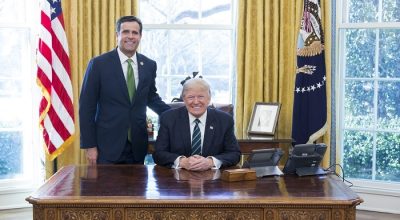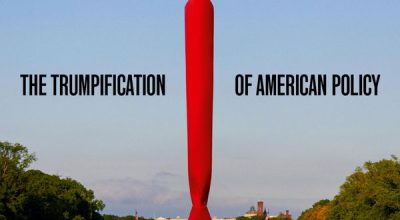
Kathmandu 3 June. Economic and trade friction unilaterally initiated by the US since March 2018, China has had to take forceful measures to defend the interests of the nation and its people. More than a year after US President Donald Trump fired the first tariff salvo that eventually led to a trade war with china US experts also has been told . the debate about who actually bears the burden of those elevated levies has not found a definite conclusion.
When Chinese goods arrive in America, importers — which are generally American but can also be U.S.-registered entities of foreign firms — pay tariffs to customs in order to receive their products. In that sense, American businesses are right that they’re the ones footing the bill.
Recently, China has concluded the Position of its to answered to the US government as belows.
“China’s Position on the China-US Economic and Trade Consultations
The State Council Information Office of
The People’s Republic of China (June 2019)
Contents
Preface
I. Economic and trade friction provoked by the US damages the interests of both countries and of the wider world
II. The US has backtracked on its commitments in the China-US economic and trade consultations
III. China is committed to credible consultations based on equality and mutual benefit
Conclusion
Preface
The China-US commercial relationship serves as both the ballast and the propeller of the overall bilateral relationship. At stake are the fundamental interests of the two peoples, and the prosperity and stability of the world. Since the establishment of diplomatic relations between China and the US, bilateral trade and economic relations have come a long way, with expanding fields of cooperation at higher levels. A mutually beneficial and win-win relationship with strong complementarity and interlinked interests has been forged, benefiting not only the two countries but also the entire world.
Given the differences in stage of development and economic system, it is inevitable that the two countries will experience differences and friction in their commercial cooperation. The history of China-US trade and economic relations has seen twists and turns and difficult situations. By adopting a rational and cooperative attitude, the two countries have managed to resolve previous conflicts, bridge differences, and render the bilateral commercial relationship more mature through dialogue and consultation.
Since it took office in 2017, the new US administration has threatened additional tariffs and other measures and provoked frequent economic and trade friction with its major trading partners. In response to the economic and trade friction unilaterally initiated by the US since March 2018, China has had to take forceful measures to defend the interests of the nation and its people. At the same time, committed to resolving disputes through dialogue and consultation, China has engaged in multiple rounds of economic and trade consultations with the US in an effort to stabilize the bilateral commercial relationship. China’s position has been consistent and clear – that cooperation serves the interests of the two countries, that conflict can only hurt both, and that cooperation is the only correct choice for both sides. Concerning their differences and frictions on the economic and trade front, China is willing to work together with the US to find solutions, and to reach a mutually beneficial and win-win agreement. However, cooperation has to be based on principles. There are bottom lines in consultations. China will not compromise on major issues of principle. China does not want a trade war, but it is not afraid of one and it will fight one if necessary. China’s position on this has never changed.
To provide a comprehensive picture of the China-US economic and trade consultations, and present China’s policy position on these consultations, the Chinese government hereby issues this White Paper.
I. Economic and trade friction provoked by the US damages the interests of both countries and of the wider world
Trumpeting “America First”, the current US administration has adopted a series of unilateral and protectionist measures, regularly wielded tariffs as a “big stick” and coerced other countries into accepting its demands. The US has initiated frequent investigations under the long-unused Sections 201 and 232 against its main trading partners, causing disruption to the global economic and trade landscape. Specifically targeting China, in August 2017 it launched a unilateral investigation under Section 301. Turning a blind eye to China’s unremitting efforts and remarkable progress in protecting intellectual property and improving the business environment for foreign investors, the US issued a myriad of slanted and negative observations, and imposed additional tariffs and investment restrictions on China, provoking economic and trade friction between the two countries.
Turning a blind eye to the nature of the economic structure and the stage of development in China and the US, as well as the reality of the international industrial division of labor, the US insists that China’s “unfair” and “non-reciprocal” trade policies have created a trade deficit in bilateral commercial exchanges that constitutes “being taken advantage of”, leading to unilateral imposition of additional tariffs on China. In fact, in today’s globalized world, the Chinese and American economies are highly integrated and together constitute an entire industrial chain. The two economies are bound in a union that is mutually beneficial and win-win in nature. Equating a trade deficit to being taken advantage of is an error. The restrictive measures the US has imposed on China are not good for China or the US, and still worse for the rest of the world.
(I) The tariff measures the US imposed harm others and are of no benefit to itself
The US administration has imposed additional tariffs on Chinese goods exported to the US, impeding two-way trade and investment cooperation and undermining market confidence and economic stability in the two countries and globally. The US tariff measures lead to a decrease in the volume of China’s export to the US, which fell by 9.7 percent year-on-year in the first four months of 20194,dropping for five months in a row. In addition, as China has to impose tariffs as a countermeasure to US tariff hikes, US exports to China have dropped for eight months in a row5.The uncertainty brought by US-China economic and trade friction made companies in both countries more hesitant about investing. China’s investment in the US continues to fall and the growth rate of US investment in China has also slowed down. According to Chinese statistics, direct investment by Chinese companies in the US was US$5.79 billion in 2018, down by 10 percent year-on-year6.In 2018, paid-in US investment in China was US$2.69 billion7,up by only 1.5 percent year-on-year compared with an increase of 11 percent in 2017. With the outlook for China-US trade friction unclear, the WTO has lowered its forecast for global trade growth in 2019 from 3.7 percent to 2.6 percent8.
(II) The trade war has not “made America great again”
The tariff measures have not boosted American economic growth. Instead, they have done serious harm to the US economy.
First, the tariff measures have significantly increased production costs for US companies. The Chinese and US manufacturing sectors are highly dependent on each other. Many American manufacturers depend on China’s raw materials and intermediary goods. As it is hard for them to find good alternative suppliers in the short term, they will have to bear the costs of the tariff hikes.
Second, the tariff measures lead to domestic price hikes in the US. The import of value-for-money consumer goods from China is a key factor behind the long-term low inflation in the US. After the additional tariffs were imposed, the final selling price of Chinese products increased, leaving American consumers effectively bearing some tariff costs. According to research by the US National Retail Federation, the 25 percent additional tariffs on furniture alone will cost the US consumer an additional US$4.6 billion per year9.
Third, the tariff measures have an impact on US economic growth and people’s livelihood. A joint report by the US Chamber of Commerce and the Rhodium Group in March 2019 showed that, under the impact of China-US economic and trade friction, US GDP in 2019 and the next four years could decrease by US$64-91 billion per year, about 0.3-0.5 percent of total US GDP. If the US imposes 25 percent tariffs on all Chinese goods exported to the US, US GDP will decrease by US$1 trillion in the next ten years cumulatively10. According to a research report in February 2019 by Trade Partnership, an American think-tank, if the US imposes 25 percent additional tariffs on all imported Chinese goods, US GDP will decrease by 1.01 percent, with 2.16 million job losses and an additional annual burden of US$2,294 on a family of four11.
Fourth, the tariff measures lead to barriers to US exports to China. The 2019 State Export Report, published by the US-China Business Council on May 1, 2019, stated that in the ten years from 2009 to 2018, US exports to China supported over 1.1 million jobs. The Chinese market continues its importance to US economic growth. Forty-eight states of the US have increased their goods exports to China during the last decade – 44 of them by double digits – while in 2018, when economic and trade friction worsened, only 16 states increased their goods exports to China. Thirty-four states exported fewer goods to China, with 24 of them seeing a double-digit decrease. The Midwestern agricultural states were hit particularly hard. Under tariff measures, exports of American agricultural produce to China decreased by 33.1 percent year-on-year, including a 50 percent drop in soybeans. US businesses are worried that they might lose the Chinese market, which they have been cultivating for nearly 40 years.
(III) US trade bullying harms the world
Economic globalization is a firmly-established trend of the times. Beggar-thy-neighbor unilateralism and protectionism are unpopular. The trade protectionist measures taken by the US go against the WTO rules, damage the multilateral trading system, seriously disrupt global industrial chains and supply chains, undermine market confidence, and pose a serious challenge to global economic recovery and a major threat to the trend of economic globalization.
First, the US measures are undermining the authority of the multilateral trading system. The US has launched a series of unilateral investigations, including those under Sections 201, 232 and 301, and imposed tariff measures. These are a serious breach of the most fundamental and central WTO rules, including most-favored-nation treatment and tariff binding. Such unilateralist and protectionist actions have harmed the interests of China and other WTO members. More importantly, they have undermined the authority of the WTO and its dispute settlement system, and exposed the multilateral trading system and international trade order to peril.
Second, the US measures threaten global economic growth. With the shadow of the international financial crisis still lingering over the global economy, the US government has escalated economic and trade friction and hiked additional tariffs, provoking corresponding measures by the countries involved. This disrupts global economic and trade order, dampens world economic recovery, and undermines the development of companies and the well-being of people in all countries, plunging the world economy into the “recession trap”.
Global Economic Prospects released by the World Bank in January 2019 revised its forecast for global economic growth down further to 2.9 percent, citing continuous trade friction as a major downward risk12. The International Monetary Fund also marked down its projection of world economic growth for 2019 to 3.3 percent from the 2018 estimate of 3.6 percent in its World Economic Outlook report published in April 2019, suggesting that economic and trade friction could further depress global economic growth and weaken already anemic investment13.
Third, the US moves disrupt global industrial and supply chains. China and the US are both key links in global industrial and supply chains. Given the large volume of intermediary goods and components from other countries in Chinese end-products exported to the US, US tariff hikes will hurt all the multinationals – not least those from the US – that work with Chinese companies. The tariff measures artificially drive up the costs of supply chains, and undermine their stability and security. As a result, some businesses are forced to readjust their global supply chains at the expense of optimal resource allocation.
It is foreseeable that the latest US tariff hikes on China, far from resolving issues, will only make things worse for all sides. China stands firm in opposition. Recently, the US administration imposed “long-arm jurisdiction” and sanctions against Huawei and other Chinese companies on the fabricated basis of national security, to which China is also firmly opposed.
II. The US has backtracked on its commitments in the China-US economic and trade consultations
In response to the economic and trade friction started by the US, China has been forced to take countermeasures, as bilateral trade and investment relations took a hit. For the well-being of the Chinese and American people and the economic development of the two countries, both sides deemed it necessary to come to the negotiating table to seek a solution through consultation. Since they were launched in February 2018, the economic and trade consultations have come a long way with the two sides agreeing on most parts of the deal. But the consultations have not been free of setbacks, each of them being the result of a US breach of consensus and commitments, and backtracking.
(I) The first US backtracking
China had advocated resolving economic and trade friction through negotiation and consultation from the start. In early February 2018, the US government expressed the wish that China send a high-level delegation to the US to engage in economic and trade consultation. Demonstrating great goodwill and positive efforts, China held several rounds of high-level economic and trade consultations with the US, characterized by in-depth exchanges of views on trade imbalance among other major issues. The two sides made substantial progress as they reached preliminary consensus on expanding China’s imports of agricultural and energy products from the US. However, on March 22, 2018, the US government unveiled the so-called report on Section 301 investigation of China, falsely accusing China of “IP theft” and “forced technology transfer”, and subsequently announced an additional tariff of 25 percent on US$50 billion of Chinese exports to the US.
(II) The second US backtracking
Taking a big-picture view of the bilateral relationship, the Chinese government sent a working team again to the US to engage in genuine consultations. On May 19, 2018, China and the US issued a joint statement, agreeing to refrain from fighting a trade war, to continue high-level communications, and to actively seek solutions to respective economic and trade concerns. The US publicly announced that it would suspend the plan for additional tariffs on Chinese goods. On May 29, 2018, despite the opposition of its domestic business community and the general public, the US administration tore up the consensus just ten days after the joint statement, gratuitously criticizing China’s economic system and trade policy, while announcing the resumption of the tariff program. Starting from early July 2018, in three steps, the US imposed additional tariffs of 25 percent on Chinese exports worth US$50 billion, and additional tariffs of 10 percent on US$200 billion of Chinese exports, which, according to the US, would be raised to 25 percent on January 1, 2019. In addition, the US threatened further tariffs on all remaining Chinese exports, leading to quick escalation of the economic and trade friction between the two countries. In defense of its national dignity and its people’s interests, China had to respond in kind and raised tariffs on imports worth US$110 billion from the US.
(III) The third US backtracking
On November 1, 2018, US President Donald Trump had a telephone conversation with Chinese President Xi Jinping and proposed a summit meeting. On December 1 the two presidents had a meeting on the margins of the G20 Summit in Argentina. In accordance with their important consensus on economic and trade issues, the two sides agreed to halt new additional tariffs for 90 days to allow for intensive talks geared toward the full elimination of all additional tariffs. In the ensuing 90 days, the working teams of China and the US held three rounds of high-level consultations in Beijing and Washington D.C., reaching preliminary consensus on many matters of principle for the China-US economic and trade deal. On February 25, 2019, the US announced the postponement of the additional tariffs scheduled for March 1 on US$200 billion of Chinese exports to the US. From late March to early April, the working teams of the two countries held another three rounds of high-level consultations and made substantial progress. Following numerous rounds of consultations, the two countries had agreed on most of the issues. Regarding the remaining issues, the Chinese government urged mutual understanding and compromise for solutions to be found.
But the more the US government is offered, the more it wants. Resorting to intimidation and coercion, it persisted with exorbitant demands, maintained the additional tariffs imposed since the friction began, and insisted on including mandatory requirements concerning China’s sovereign affairs in the deal, which only served to delay the resolution of remaining differences. On May 6, 2019, the US irresponsibly accused China of backtracking on its position to shift the blame for the inconclusive talks onto China. Despite China’s fierce opposition, the US raised the additional tariffs on US$200 billion of Chinese exports to the US from 10 percent to 25 percent, which represented a serious setback to the economic and trade consultations. On May 13 the US announced that it had launched procedures to slap additional tariffs on remaining Chinese goods, which are worth around US$300 billion. These acts contradicted the agreement reached by the two presidents to ease friction through consultation – and the expectations of people around the world – casting a shadow over the bilateral economic and trade consultations and world economic growth. In defense of its own interests, China had to take tariff measures in response.
(IV) The US government should bear the sole and entire responsibility for this severe setback to the China-US economic and trade consultations
The US government accusation of Chinese backtracking is totally groundless. It is common practice for both sides to make new proposals for adjustments to the text and language in ongoing consultations. In the previous more than ten rounds of negotiations, the US administration kept changing its demands. It is reckless to accuse China of “backtracking” while the talks are still under way. Historical experience has proved that any attempt to force a deal through tactics such as smears, undermining and maximum pressure will only spoil the cooperative relationship. Historic opportunities will be missed.
A civilized country turns to forceful measures only when gentler approaches have failed. After the US issued the new tariff threat, the international community was widely concerned that China might cancel the consultation visit to the US. It kept a close watch on the future direction of the China-US trade negotiations. Bearing in mind the broader interests of trade and economic relations between the two countries, China remained cool-headed, exercised restraint, and sent a senior delegation to the US, as agreed, for the 11th round of economic and trade consultation from May 9 to 10. In doing so, China demonstrated the greatest sincerity and a strong sense of responsibility for resolving trade disputes through dialogue. In the following candid and constructive discussions, the two sides agreed to manage differences and continue consultations. China expressed strong opposition to the unilateral tariff increase by the US and stated its firm position that it would have to take necessary countermeasures. China emphasized once again that trade deals must be based on equality and mutual benefit. China will never compromise on major principles concerning China’s core interests. One prerequisite for a trade deal is that the US should remove all additional tariffs imposed on Chinese exports and China’s purchase of US goods should be realistic while ensuring that a proper balance in the text of the agreement is achieved to serve the common interests of both sides.
III. China is committed to credible consultations based on equality and mutual benefit
The Chinese government rejects the idea that threats of a trade war and continuous tariff hikes can ever help resolve trade and economic issues. Guided by a spirit of mutual respect, equality and mutual benefit, the two countries should push forward consultations based on good faith and credibility in a bid to address issues, narrow differences, expand common interests, and jointly safeguard global economic stability and development.
(I) Consultations should be based on mutual respect, equality and mutual benefit
It is only natural for China and the US, the two largest economies and trading nations in the world, to experience some differences over trade and economic cooperation. What truly matters is how to enhance mutual trust, promote cooperation and manage differences. For the good of the common interests of the two countries and global trade order, and in a strenuous effort to push forward the economic and trade consultations, China remains committed to resolving issues through dialogue and consultation, responding to US concerns with the greatest patience and sincerity, properly handling differences while seeking common ground, and overcoming obstacles to practical solutions. During the consultations, in accordance with the principle of mutual respect, equality and mutual benefit, China’s only intention is to reach a mutually acceptable deal.
Mutual respect means that each side should respect the other’s social institutions, economic system, development path and rights, core interests, and major concerns. It also means that one side should not cross the other’s “red lines”. The right to development cannot be sacrificed, still the less can sovereignty be undermined. As regards equality and mutual benefit, we must ensure that the two sides in the consultations operate on an equal footing, that results are mutually beneficial, and that any final agreement is a win-win one. Negotiations will get nowhere if one side tries to coerce the other or if only one party will benefit from the outcomes.
(II) Consultation involves working toward the same goal in good faith
Consultation calls for mutual understanding and genuine effort from both sides. Consultation is a process where the parties concerned seek consensus or make compromise through discussion. Many factors are at play in consultation. It is perfectly normal during consultations for the parties to react differently to various changes at different stages based on their own interests.
The Chinese government believes that economic and trade consultation is an effective way to solve issues. None other than engagement with goodwill and a full understanding of the other’s position can contribute to success. Otherwise, it will be hard to reach a sustainable and enforceable deal as the parties will not find the ground for a long-term and effective agreement.
Good faith is the foundation of consultation. The Chinese government has engaged in these consultations with the US with the utmost credibility and the greatest sincerity. Attaching great importance to US concerns, China has worked hard to look for effective paths and find ways to address differences. The 11 rounds of high-level consultations have made significant progress. The outcomes of the consultations have not only served the interests of China, but also those of the US, as a result of both sides’ efforts to pull in the same direction. China has kept its word during the consultations. China has emphasized repeatedly that if a trade agreement is reached, it will honor its commitments sincerely and faithfully.
(III) China will not give ground on issues of principle
Every country has its own matters of principle. During consultations, a country’s sovereignty and dignity must be respected, and any agreement reached by the two sides must be based on equality and mutual benefit. On major issues of principle, China will not back down. Both China and the US should see and recognize their countries’ differences in national development and in stage of development, and respect each other’s development path and basic institutions. While no one expects to resolve all issues through one single agreement, it is necessary to ensure that any agreement will satisfy the needs of both sides and achieve a balance.
The recent US move to increase tariffs on Chinese exports does not help to solve bilateral trade issues. China strongly opposes this and has to respond to safeguard its lawful rights and interests. China has been consistent and clear on its position, that it hopes to resolve issues through dialogue rather than tariff measures. China will act rationally in the interests of the Chinese people, the American people, and all other peoples around the world. However, China will not bow under pressure and will rise to any challenge coming its way. China is open to negotiation, but will also fight to the end if needed.
(IV) No challenge will hold back China’s development
China’s development may not be all smooth sailing. Difficulties or even perils are inevitable. Whatever the future might bring, China is confident of meeting challenges head on, turning risks into opportunities, and opening new chapters.
China remains committed to its own cause no matter how the external environment changes. The fundamental solution to economic and trade tensions is to grow stronger through reform and opening up. With the enormous demand from the domestic market, deeper supply-side structural reform will comprehensively enhance the competitiveness of Chinese products and companies. We still have sufficient room for fiscal and monetary policy maneuvers. China can maintain sound momentum for sustainable and healthy economic development, and its economic prospects are bright.
China will continue to deepen reform and opening up. China’s door will not be closed; it will only open even wider. President Xi Jinping announced in his keynote speech at the opening ceremony of the Second Belt and Road Forum for International Cooperation that China would adopt a number of major reform and opening-up measures, strengthen institutional and structural arrangements, and promote opening up at a higher level. Measures to be taken include expanding market access for foreign investment in broader areas, strengthening international cooperation on intellectual property protection, increasing imports of goods and services, implementing more effective international coordination on macro-economic policies, and putting more focus on the implementation of opening-up policies. A more open China will have more positive interactions with the world, which in turn will advance the development and prosperity of both China and the world.
Conclusion
Cooperation is the only correct choice for China and the US and win-win is the only path to a better future. As to where the China-US economic and trade consultations are heading, China is looking forward, not backward. Disputes and conflicts on the trade and economic front, at the end of the day, need to be solved through dialogue and consultation. Striking a mutually beneficial and win-win agreement serves the interests of China and the US and meets the expectations of the world. It is hoped that the US can pull in the same direction with China and, in a spirit of mutual respect, equality and mutual benefit, manage economic and trade differences, strengthen trade and economic cooperation, and jointly advance China-US relations based on coordination, cooperation and stability for the well-being of both nations and the world.
1 In February 2018, the Global Innovation Policy Center of the US Chamber of Commerce published the International Intellectual Property Index 2018, noting that in 2018, China with a score of 19.08 rose to 25th among the 50 ranked economies, two places up from where it had been in 2017. http://www.theglobalipcenter.com/wp-content/uploads/2018/02/GIPC_IP_Index_2018.pdf
2 On January 18, 2018, CNIPA press conference on key statistics of the work in 2017 and related updates. http://www.sipo.gov.cn/twzb/gjzscqj2017nzygztjsjjygqkxwfbk/
3 USCBC: 2019 State Export Report, https://www.uschina.org/reports/2019-state-export-report, May 1, 2019.
4 General Administration of Customs of China, http://www.customs.gov.cn/customs/302249/302274/302275/2418393/index.html, May 8, 2019.
5 General Administration of Customs of China, http://www.customs.gov.cn/customs/302249/302274/302275/2418393/index.html, May 8, 2019.
6 MOFCOM statistics.
7 MOFCOM: National FDI Briefing for January to December, 2018, http://www.mofcom.gov.cn/article/tongjiziliao/v/201901/20190102832209.shtml, January 15, 2019.
8 WTO: “WTO trade forecasts: Press conference”, https://www.wto.org/english/news_e/spra_e/spra255_e.htm, April 2, 2019.
9 US National Retail Federation: “NRF Warns USTR Tariffs Would Cost Americans Billions, Releases New Study on Consumer Impact”, https://nrf.com/media-center/press-releases/nrf-warns-ustr-tariffs-would-cost-americans-billions-releases-new-study, August 22, 2018.
10 US Chamber of Commerce and Rhodium Group: Assessing the Costs of Tariffs on the U.S. ICT Industry: Modeling U.S.-China Tariffs, https://rhg.com/research/assessing-the-costs-of-tariffs-on-the-us-ict-industry, March 15, 2019.
11 Trade Partnership: Estimated Impacts of Tariffs on the U.S. Economy and Workers (2019), https://tradepartnership.com/reports/estimated-impacts-of-tariffs-on-the-u-s-economy-and-workers-2019, February 5, 2019.
12 World Bank: Global Economic Prospects, https://www.worldbank.org/en/publication/global-economic-prospects, January 8, 2019.
13 IMF: World Economic Outlook, https://www.imf.org/en/Publications/WEO/Issues/2019/03/28/world-economic-outlook-april-2019, April 2, 2019.








प्रतिक्रिया दिनुहोस्